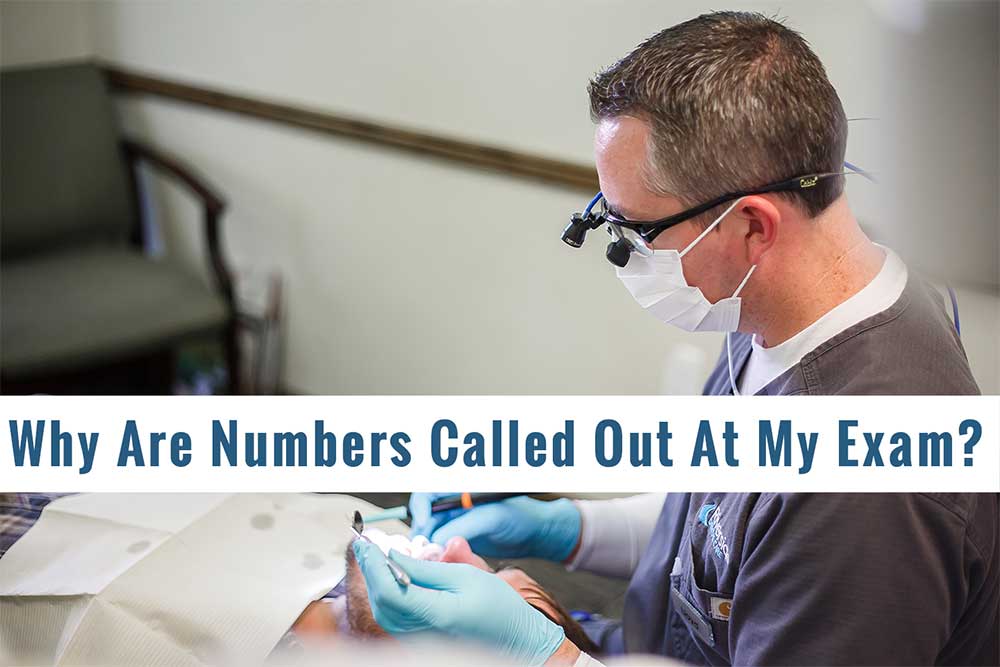
During a dental cleaning, you may have heard a dentist call out numbers to their dental hygienist while examining your teeth. But, with your mouth full of a dentist’s fingers, you may not have had an opportunity to ask what the numbers mean.
At Riverside Dental Care, we do our best to explain what we are doing and why during your appointment, particularly for our first-time patients since no one likes to have someone talk over them. If you have been in the care of other dentists who haven’t explained previously, then let us help clarify—the numbers generally refer to your gum health, though it can refer to a specific tooth.
Gum Health Has Numbers Assigned
Let’s start with numbers and gum health. When you have gum disease (periodontal disease), your gums become inflamed and pull away from your teeth, leaving a pocket. This pocket is measured as either 1, 2, 3, or 4 by dentists.
Ideally, all your teeth will measure zero, but information from the CDC shows that 47.2% of American adults have some level of periodontal disease. So, if you have heard numbers called out while a dentist is measuring your teeth, here are what they mean:
- Gingivitis – Highly common form of gum disease, gingivitis generally presents with light inflammation and the gums slightly pulling away. This form of periodontal disease is the most treatable, and the removal of dental plaque—followed up with regular dental hygiene—can resolve the problem.
- Mild periodontitis – Clinically, mild periodontitis is similar to gingivitis—however, bone loss is the main difference. The loss of supporting jawbone material is concerning, as it leaves your tooth more vulnerable. Intervention by our dentists is important to stop the bone loss.
- Moderate periodontitis – Deeper pockets in your gums develop with moderate periodontitis, and there is between 20-50% of bone loss around your tooth. This loss can make it far easier to chip your tooth and allow bacteria to hide in the pockets, leading to cavities and infections.
- Advanced periodontitis – At this stage, over 50% of your supporting jawbone is gone, making it more likely that you could lose the tooth entirely. Surgical intervention by our dentist is needed to correct advanced periodontitis in its most severe stages.
If you do have some level of periodontal disease, you aren’t out of options! We have a number of dental services to help address gum disease that we can help you choose from, from scaling and planing your teeth to various other options, such as bone grafts to replace lost jawbone density.
Your Teeth Also Referred To By Number
Along with the numbers called out regarding pockets, there will be a correlating number that refers to what tooth is affected. That way, it is easy for the attending dental hygienist to notate where the problem pocket is located.
For instance, say you have a level three on your upper left second molar. Rather than say all that, our dentists will say “Three on fifteen” to keep the process moving quickly. Other dental issues are also tracked this way, such as cavities, to help ensure that your dental care is accurate.
To set up a dental cleaning appointment for yourself or for someone in your family, feel free to contact us today. With our two convenient dental clinics, we will do our best to get you in as soon as possible.



Leave a Reply